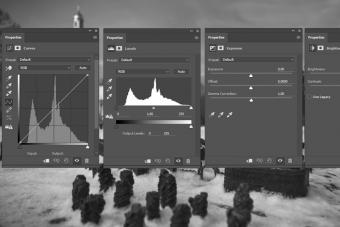Hardware examination of the gastrointestinal tract is represented by several types, among which the most commonly used are ultrasound (ultrasound) and magnetic resonance imaging (MRI). Examination methods allow you to visually view the organs of the digestive system and help confirm or refute a suspected diagnosis.
What symptoms require a hardware examination of the gastrointestinal tract?
- abdominal pain of various localization and character;
- sensation of pulsation in the abdomen;
- bitter taste in the mouth;
- belching;
- discomfort or feeling of heaviness under the right rib;
- change in the color of the tongue (yellow, white or brown coating);
- nausea, vomiting;
- violation of the stool (constipation, diarrhea, impurities in the feces);
- discoloration of the skin (yellowing, the appearance of vascular "asterisks" on the skin);
- the presence of a volumetric formation in the abdomen;
- frequent regurgitation or vomiting with a fountain in children (especially infants);
- during or after infectious diseases (viral hepatitis, malaria, infectious mononucleosis);
- change in the color of urine (darkening) or stool (discoloration);
- aversion to food, incomprehensibility of any products (cereal, dairy);
- after an abdominal injury.
Ultrasound examination of the gastrointestinal tract. What is it for?
The advantages of ultrasound diagnostics are the ability to examine organs in several projections, as well as the study of peristalsis (muscle contraction) and the work of sphincters (muscle rings at the outlet of the esophagus, stomach or intestines). Sonography (ultrasound) allows you to evaluate the structure of the entire wall of organs, under the control of ultrasound it is easier to conduct a biopsy (collection of a part of the cells) to study for the presence of a neoplasm.
In addition, this type of examination does not penetrate the patient's body, that is, it is non-invasive. Ultrasound is comfortable for the subject, does not cause discomfort during the procedure. Allows you to assess the nature of the blood supply to organs and the work of blood and lymphatic vessels. Ultrasound examination of the gastrointestinal tract reveals:
- Diseases of the esophagus. Esophagitis (inflammation of the mucous membrane of the esophagus), gastroesophageal reflux disease.
- Diseases of the stomach. Gastritis (inflammation of the gastric mucosa), changes in the size or curvature of the stomach, outgrowths of the mucous membrane (polyps), tumors, congenital malformations, narrowing of the sphincter at the outlet of the stomach (pylorospasm).
- Intestinal diseases. Dyskinesia (decrease or increase in intestinal tone), enterocolitis (inflammation of the mucous membrane of the small or large intestine), tumors, polyps, narrowing of the intestinal lumen, stenosis (narrowing), congenital anomalies (dolichosigma, etc.).
- Diseases of the liver and biliary tract. Accumulation of pathological substances in the liver (calcifications), inflammation of the liver cells (hepatitis), cysts (cavities in the thickness of the organ), tumors or metastases in the liver, increased pressure in the portal vein basin, anomalies in the development of the gallbladder, biliary dyskinesia, the presence of calculi (stones ) in the lumen of the gallbladder.
- Diseases of the pancreas. Pancreatitis (inflammation of the pancreatic tissue), violation of the outflow of pancreatic juice, blockage of the lumen of the pancreatic ducts.
Magnetic resonance imaging (MRI). What are the advantages of the method?
MRI is a type of study that allows you to visualize the structure of an organ, its position in the body, blood supply, communication with neighboring organs and tissues. Visualization takes place in 3D format. This type of examination allows you to make a diagnosis at the earliest stages, even when there are no clinical manifestations (symptoms) yet. This helps to prevent a lot of complications and start treatment in a timely manner. 
What can be determined during an MRI?
- congenital anomalies and malformations of the organs of the gastrointestinal tract;
- damage to the abdominal organs after injury;
- foreign bodies in the lumen of the esophagus, stomach or intestines;
- spasms of blood vessels in the liver or pancreas, threatening heart attacks, ischemia;
- inflammatory processes in the organs of the digestive system;
- infiltrates, abscesses (accumulation of pus);
- adhesions, especially after surgery;
- tumor formations in any of the organs of the gastrointestinal tract;
- fatty degeneration of the liver or cirrhosis;
- cavity formations (cysts, hematomas);
- the presence of stones in the gallbladder or bile ducts.
There are a number of contraindications to this type of research. This is the presence in the patient of metal prostheses or devices (pacemakers, extrauterine devices, dentures). It is also not recommended to conduct an MRI in early pregnancy, patients with claustrophobia. In childhood, this type of diagnosis is limited, since complete immobility of the patient is required. In extreme cases, if necessary, the examination of the child is administered under anesthesia.
The appointment of examinations of the gastrointestinal tract is based on the symptoms that the patient presents, and in order to control and prevent diagnosed chronic diseases of the gastrointestinal tract. Indications for diagnostic procedures can be: difficult and painful digestion (dyspepsia), regular nausea, vomiting, heartburn, stomach pain, suspected oncopathology.
To date, the most accurate examination of the gastrointestinal tract is fibrogastroduodenoscopy. During FGDS, the gastroenterologist has the opportunity to assess in detail the condition of the gastric mucosa and duodenum, and make the only correct diagnosis. The complexity of the examination lies in the inability of some patients to swallow a flexible hose equipped with a video camera.
Many people ignore the procedure precisely because of the discomfort. Therefore, it would be useful to find out how to check the stomach without gastroscopy in order to timely diagnose one or another pathology. In addition to the vegetative prejudice to EGD, there are a number of contraindications to its implementation: a history of hemostasis (blood clotting) disorders, bronchial asthma, emetic hyperreflex.
In such cases, other methods of examining the stomach are prescribed. Diagnosis of diseases and abnormalities in the work of the stomach is carried out in three main areas: a physical set of measures, a laboratory study of the patient's tests, an examination using medical diagnostic equipment, and alternative endoscopy.
Easy Diagnosis
Simple diagnostic methods are mandatory for use when a patient complains of an acute abdomen, nausea, and other symptoms of gastric diseases.
Physical examination
Physical activities are carried out at the doctor's appointment, the results depend on the qualifications of the medical specialist. The complex includes:
- study of anamnesis, evaluation of symptoms according to the patient;
- visual examination of the mucous membranes;
- feeling painful areas of the body (palpation);
- palpation in a specific position of the body (percussion).
Based on the results obtained during such an examination, it is extremely difficult to diagnose the disease. The doctor may suspect the presence of a pathology, but deeper research methods are needed to confirm it.
Microscopic laboratory diagnostics
Laboratory methods consist in taking samples from the patient for further study and evaluation of the results. Most often, the following physical and chemical studies are prescribed:
- general urine analysis;
- coprogram (fecal analysis);
- clinical blood test. The number of all types of blood cells (erythrocytes, leukocytes, platelets) is counted, the level of hemoglobin is determined;
- gastropanel. This blood test is aimed at studying the condition of the gastric mucosa. Based on its results, the following are established: the presence of antibodies to Helicobacter pylori bacteria, the level of produced pepsinogen proteins, the level of the polypeptide hormone - gastrin, which regulates the acidic environment in the stomach;
- blood biochemistry. Quantitative indicators of bilirubin, liver enzymes, cholesterol and other blood cells are established.
Blood sampling for clinical analysis is carried out from a finger
Analyzes help to identify inflammatory processes and other disorders of the organs and systems. If the results differ significantly from the normative indicators, the patient is assigned an instrumental or hardware examination.
Application of hardware techniques
Examination of the stomach without gastroscopy is carried out with the participation of special medical devices. They record the state of the mucosa, density, size and other parameters of the organ, and transmit information that is subject to subsequent decoding by a specialist.
- x-ray examination (with the use of contrast);
- CT and MRI (computed and magnetic resonance imaging);
- EGG (electrogastrography) and EGEG (electrogastroenterography);
- Ultrasound (ultrasound examination).
During gastric examination by hardware, all manipulations are performed without direct intervention in the body, without damaging the external tissues of the body (non-invasively). The procedures do not cause pain in the patient.
Significant disadvantages of the method include low information content in the initial period of the disease, X-ray irradiation unsafe for health, side effects from taking a barium solution.
X-ray with contrast
The method is based on the use of x-rays. To improve visualization of the stomach, the patient drinks a barium solution before the examination. This substance plays the role of a contrast, under the influence of which soft tissues acquire the ability to absorb x-rays. Barium darkens the organs of the digestive system in the picture, which allows you to detect possible pathologies.
X-ray helps in determining the following changes:
- improper arrangement of organs (displacement);
- condition of the lumen of the esophagus and stomach (enlargement or narrowing);
- non-compliance of organs with standard sizes;
- hypo- or hypertonicity of the muscles of organs;
- a niche in the filling defect (most often, this is a symptom of peptic ulcer disease).
CT scan
In fact, this is the same x-ray, only modified, with advanced diagnostic capabilities. The examination is carried out after the preliminary filling of the stomach with liquid for a clearer view.
In addition, an iodine-based contrast agent is injected intravenously to highlight blood vessels on a tomogram. CT, as a rule, is used for suspected tumor processes of oncological etiology. The method allows you to find out not only the presence of stomach cancer in a patient and its stage, but also the degree of involvement of adjacent organs in the oncological process.
The imperfection of diagnostics consists in the exposure of the patient to X-rays, possible allergic reactions to contrast, as well as the inability of CT to fully and detailed study of the digestive tract, since its hollow tissues are difficult to diagnose using CT. The procedure is not performed for women in the perinatal period.
MR imaging
The prerogative aspects of MRI are the use of magnetic waves that are safe for the patient, the ability to determine the initial stage of gastric cancer. In addition, this diagnosis is prescribed for suspected ulcers, intestinal obstruction and gastritis, to assess the adjacent lymphatic system, and to detect foreign objects in the gastrointestinal tract. The disadvantages include contraindications:
- body weight 130+;
- the presence in the body of metal medical items (vascular clips, pacemaker, Ilizarov apparatus, inner ear prostheses);
- rather high cost and inaccessibility for peripheral hospitals.

Examination of the gastrointestinal tract on magnetic resonance imaging is often performed with contrast
EGG and EGEG
Using these methods, the stomach and intestines are evaluated during the period of peristaltic contractions. A special device reads the impulses of electrical signals that come from the organs during their contraction during the digestion of food. As an independent study, it is practically not used. They are used only as an auxiliary diagnostics. The disadvantages are the long time period of the procedure (about three hours) and the inability of the appliance to establish other diseases of the gastrointestinal tract.
ultrasound
Diagnosis of the stomach by ultrasound, most often, is carried out as part of a comprehensive examination of the abdominal organs. However, unlike the indicators of other organs (liver, pancreas, gallbladder, kidneys), it is not possible to examine the stomach completely. There is no complete picture of the organ.
In this regard, the list of diagnosed diseases is limited:
- abnormal change in the size of the organ, swelling of the walls;
- purulent inflammation and the presence of fluid in the stomach;
- limited accumulation of blood in case of damage to the organ with rupture of blood vessels (hematomas);
- narrowing (stenosis) of the lumen;
- tumor formations;
- protrusion of the walls (diverticulosis) of the esophagus;
- intestinal obstruction.

Ultrasound examination of the abdominal organs is preferably carried out annually
The main disadvantage of all hardware diagnostic procedures is that the medical specialist examines only external changes in the stomach and adjacent organs. In this case, it is impossible to determine the acidity of the stomach, to take tissues for further laboratory analysis (biopsy).
Addition to hardware diagnostics
An additional method is Acidotest (taking a combined medical preparation to establish approximate indicators of the pH of the gastric environment). The first dose of medication is taken after emptying the bladder. After 60 minutes, the patient gives a urine test and takes a second dose. After an hour and a half, urine is taken again.
Before testing, it is forbidden to eat food for eight hours. Urine analysis reveals the presence of a dye in it. This allows you to roughly determine the acidity of the stomach without gastroscopy. Acidotest does not give 100% effectiveness, but only indirectly indicates a reduced (increased) level of acidity.
Alternative Endoscopy
Closest to EGD in terms of information content is capsule endoscopy. The examination is carried out without swallowing the probe, and at the same time it reveals a number of pathologies that are inaccessible to hardware procedures:
- chronic ulcerative and erosive lesions;
- gastritis, gastroduodenitis, reflux;
- neoplasms of any etiology;
- helminth infestations;
- inflammatory processes in the small intestine (enteritis);
- cause of systematic indigestion;
- Crohn's disease.
The diagnostic method is carried out by introducing a capsule with a tiny video camera into the patient's body. There is no need for an instrumental introduction. The weight of the microdevice does not exceed six grams, the shell is made of polymer. This makes it easy to swallow the capsule with a sufficient amount of water. The video camera data is transmitted to the device installed on the patient's waist, the indications from which are taken by the doctor after 8-10 hours. At the same time, the rhythm of a person's habitual life does not change.

Capsule for endoscopic examination of the stomach
Removal of the capsule occurs naturally during bowel movements. Significant disadvantages of the technique include: the inability to conduct a biopsy, the extremely high cost of the examination. All methods for diagnosing the gastrointestinal tract provide for preliminary preparation of the body. First of all, it concerns the correction of nutrition.
The diet should be lightened a few days before the examination. Carrying out hardware procedures is possible only on an empty stomach. The stomach can be checked using any method that is convenient and not contraindicated for the patient. However, the palm in terms of information content, and hence the maximum accuracy of diagnosis, remains with FGDS.
According to medical statistics, 95% of the inhabitants of the Earth need regular monitoring. Of these, more than half (from 53% to 60%) are familiar with chronic and acute forms (inflammatory changes in the gastric mucosa), and about 7-14% suffer firsthand.
Symptoms of gastric pathology
The following manifestations may indicate problems in this area:
- pain in the stomach, a feeling of fullness, heaviness after eating;
- pain behind the sternum, in the epigastric region;
- difficulty swallowing food;
- feeling of a foreign body in the esophagus;
- belching with a sour taste;
- heartburn;
- nausea, vomiting of undigested food;
- vomiting with an admixture of blood;
- increased gas formation;
- black feces, bleeding during bowel movements;
- bouts of "wolf" hunger / lack of appetite.
Of course, a serious indication for a gastroenterological examination are previously identified pathologies of the digestive system:
- inflammatory processes;
- oncological diseases, etc.
Diagnosis of diseases of the stomach
Diagnosis of diseases of the stomach is a whole range of studies, including physical, instrumental, laboratory methods.
Diagnosis begins with a survey and examination of the patient. Further, based on the collected data, the doctor prescribes the necessary studies.
Instrumental diagnosis of stomach diseases involves the use of such informative methods as:
- CT scan;
The complex of laboratory methods for diagnosing diseases of the stomach, as a rule, includes:
- general blood analysis;
- blood chemistry;
- general analysis of urine, feces;
- gastropanel;
- PH-metry;
- analysis for tumor markers;
- breath test for .
General blood analysis . This study is indispensable for assessing the state of health in general. When diagnosing diseases of the gastrointestinal tract by changing indicators (ESR, erythrocytes, leukocytes, lymphocytes, hemoglobin, eosinophils, etc.), one can state the presence of inflammatory processes, various infections, bleeding, neoplasms.
Blood chemistry . The study helps to identify violations of the functions of the gastrointestinal tract, to suspect an acute infection, bleeding, or neoplasm growth in the subject.
General urine analysis . According to such characteristics as color, transparency, specific gravity, acidity, etc., as well as the presence of inclusions (glucose, blood or mucous inclusions, protein, etc.), one can judge the development of an inflammatory or infectious process, neoplasms.
General analysis of feces . The study is indispensable in the diagnosis of bleeding, digestive dysfunction.
tumor markers . To detect malignant tumors of the gastrointestinal tract, specific markers are used (REA, CA-19-9, CA-242, CA-72-4, M2-RK).
PH-metry . This method allows you to obtain data on the level of acidity in the stomach using flexible probes equipped with special measuring electrodes that are inserted into the stomach cavity through the nose or mouth.
It is carried out in cases where the doctor needs this indicator to make a diagnosis, to monitor the patient's condition after gastric resection, and also to evaluate the effectiveness of drugs designed to reduce or increase the acidity of gastric juice.
pH-metry is carried out in a medical institution, under the constant supervision of a doctor.
Gastropanel . A special set of blood tests that helps to assess the functional and anatomical state of the gastric mucosa.
The gastroenterological panel includes the most important indicators for diagnosing gastric pathologies:
- antibodies to Helicobacter pylori (these antibodies are detected in patients suffering from gastritis, duodenitis, peptic ulcer);
- gastrin 17 (a hormone that affects the regenerative function of the stomach);
- pepsinogens I and II (the level of these proteins indicates the state of the mucous membrane of the body of the stomach and the organ as a whole).
How to prepare for analysis
Urine, stool tests . The biomaterial is collected in a special sterile container (purchased at a pharmacy). On the eve, it is not recommended to drink multivitamins and consume products that can change the color of the biomaterial, as well as laxative and diuretic drugs.
Urine is collected in the morning, after careful hygiene of the external genital organs. It is necessary to drain the first dose of urine into the toilet, and collect the middle portion (100-150 ml) in a container.
Feces are collected in the morning or no later than 8 hours before analysis.
Gastropanel . A week before the study, you should stop taking drugs that can affect the secretion of the stomach. For a day, exclude the use of drugs that neutralize hydrochloric acid. On the morning of the analysis, do not drink, do not eat, do not smoke.
The study consists in donating blood from a vein in two doses: immediately upon arrival at the treatment room and 20 minutes later, after taking a special cocktail designed to stimulate the hormone gastrin 17.
Blood tests (general, biochemical) . Blood for research is taken in the morning on an empty stomach. On the eve of the analysis, you should avoid stress, refrain from eating heavy food, alcohol. On the morning of the analysis, you can not eat or smoke. Clean water is allowed.
PH-metry. The probe is installed in the morning on an empty stomach. At least 12 hours must have passed since the last meal, and you can drink water no later than four hours before the procedure. Before the planned study, be sure to warn the doctor about the medicines you are taking, you may have to stop using them a few hours (and some drugs - a few days) before the procedure.
It is also recommended to refuse a few days before the study from eating foods that can change the pH of the stomach (we are talking about carbonated and alcoholic drinks, coffee, strong tea, fruit juices, yogurts, etc.).
Laboratory diagnostics of stomach diseases in "MedicCity":
- Gastropanel;
- Determination of biochemical parameters;
- Pepsinogen-I;
- Pepsinogen-II;
- Gastrin-17 basal;
- Gastrin-17 stimulated;
- Antibodies of the IgG class to;
- PCR feces.
In the multidisciplinary clinic "MedicCity" patients are offered a wide range of diagnostic and therapeutic services. You can undergo instrumental diagnostics of stomach diseases, take tests at any convenient time by appointment, without queues and stress, in a pleasant atmosphere and at an adequate cost.
Types of gastrointestinal diseases
Among the diseases of the gastrointestinal tract are:
Disease symptoms
Manifestations of diseases of the gastrointestinal tract are quite characteristic and largely depend on the localization of the pathological process:
- Acute pain in the abdomen
- Heartburn and belching
- Nausea and vomiting
- Heaviness in the abdomen
- Flatulence and bloating
- Stool disorder: diarrhea or constipation, as well as changes in the appearance, color, and frequency of bowel movements
- Sudden change in weight and/or appetite
- Coated tongue and bad breath
- Yellowing of the skin and sclera
If you have one of these symptoms, and especially two or three, it is recommended to consult a specialist gastroenterologist. MEDSI doctors will ask about complaints, take an anamnesis, and before starting treatment, they will definitely find out the cause of the disease.
Causes of diseases of the digestive tract
A variety of factors influence the development of pathological conditions of the gastrointestinal tract. Finding out the cause of the disease is extremely important for the selection of its competent therapy.
- Mode and nature of nutrition. The gastrointestinal tract is in direct contact with the food we take. The abundance of preservatives, artificial colors or other ingredients that aggressively affect the mucous membrane negatively affects its condition. Wrong diet, unbalanced composition, intake of very hot, cold or spicy food also provokes digestive disorders.
- Alcohol and smoking. Strong alcoholic drinks have a traumatic effect on the gastric mucosa, and smoking contributes to the development of cancer
- Ecology. City dwellers often eat meat or vegetables that contain antibiotics or nitrates. The quality of water in urban water supply systems also leaves much to be desired.
- Taking certain medications, including non-steroidal anti-inflammatory drugs
- Genetic predisposition, which tends to manifest itself with a decrease in immunity or the action of predisposing factors
- stress
- infections
- Diseases of other organs and systems
Diagnostic methods
During the initial appointment, a MEDSI gastroenterologist conducts a complete survey of the patient and finds out his complaints, anamnesis of the current disease, the presence of concomitant pathologies and allergies, family medical history, diet. After that, the doctor proceeds to a general examination and palpation of the abdomen. Depending on the results of the primary study, the specialist prescribes additional examinations.
The MEDSI clinic is equipped with high-quality modern equipment, which allows you to make an accurate diagnosis in the shortest possible time, as well as to track the dynamics of the patient's condition while on therapy.
MEDSI uses:
- Laboratory diagnostics: blood, stool and urine tests, which can also determine the presence of infections
- Ultrasound examination of the abdominal organs
- X-ray examination, including with contrast
- MRI and CT
- Endoscopic examinations: gastroscopy, colonoscopy with the possibility of taking a biopsy or performing additional medical manipulations
- Determination of the presence of Helicobacter Pylori using a breath test or rapid biopsy analysis
Advantages of treatment at the MEDSI clinic
The doctor of the MEDSI clinic, when accepting a patient for the first time, surrounds him with professional care and makes every effort to ensure that the treatment process, which is often very lengthy, is as comfortable and effective as possible.
The specialist accompanies the patient at all stages of diagnosis, prescribes and corrects, if necessary, drug therapy, prescribes physiotherapy and rehabilitation procedures. An important component of treatment is the selection of a therapeutic diet and regular examinations during remissions.
The combination of the experience of qualified specialists, high-tech equipment and modern treatment methods allows our patients to return to an active life in the optimal time.
The general health of a person largely depends on the work of the gastrointestinal tract (GIT). Therefore, it is important to ensure the proper functioning of all parts of the digestive tract. This is possible only with timely monitoring of the state of health and prompt response to the complaints of your body.Comprehensive Check Up-diagnostics programs in the field of "Gastroenterology" are designed to detect disorders in the functioning of the digestive tract, including in the early stages, and timely prevent the development of pathology.
Thanks to such programs, which include all the necessary tests and studies, patients in a short time have the opportunity to undergo a full qualified medical examination of the digestive system.
At all stages of the Check Up program, CM-Clinic specialists provide their patients with comfortable support, and following its results, they receive a detailed conclusion about the work of the digestive system of the body and the necessary recommendations.
Who Needs Check Up Gastroenterology Programs
- to all healthy people once a year, even in the absence of complaints;
- persons with a hereditary predisposition to diseases of the digestive tract;
- people with bad habits (alcohol abuse), constant stress, eating disorders;
- people with discomfort / or pain in the abdomen, with nausea, heartburn, belching, problems with stool
- suffering from chronic diseases of the digestive tract (as an annual routine examination).
Programs «Check Up. Gastroenterology" in "SM-Clinic"
We offer to undergo a comprehensive Check Up examination of the gastrointestinal tract:The task of the program is to timely assess the state of the organs of the digestive system, to identify the existing violations in its work at any stage of development.
The cost of the program: from 10,000 rubles.
The program combines diagnostic procedures that allow you to reliably identify predisposition to various diseases of the digestive system and the presence of an already developing pathology, including in the early stages. Based on the data of the conducted studies, the patient receives a detailed conclusion of a gastroenterologist and recommendations for adjusting lifestyle, nutrition and further treatment.
Benefits of completing the Check Up. Gastroenterology" in "SM-Clinic"
- Availability of our own laboratory, providing high accuracy and efficiency of analysis
- Comfortable service without expectations
- Experienced doctors and diagnosticians
- The latest technical equipment for instrumental examinations
- Detailed conclusion, expert advice and individual recommendations based on the results of the completed program





